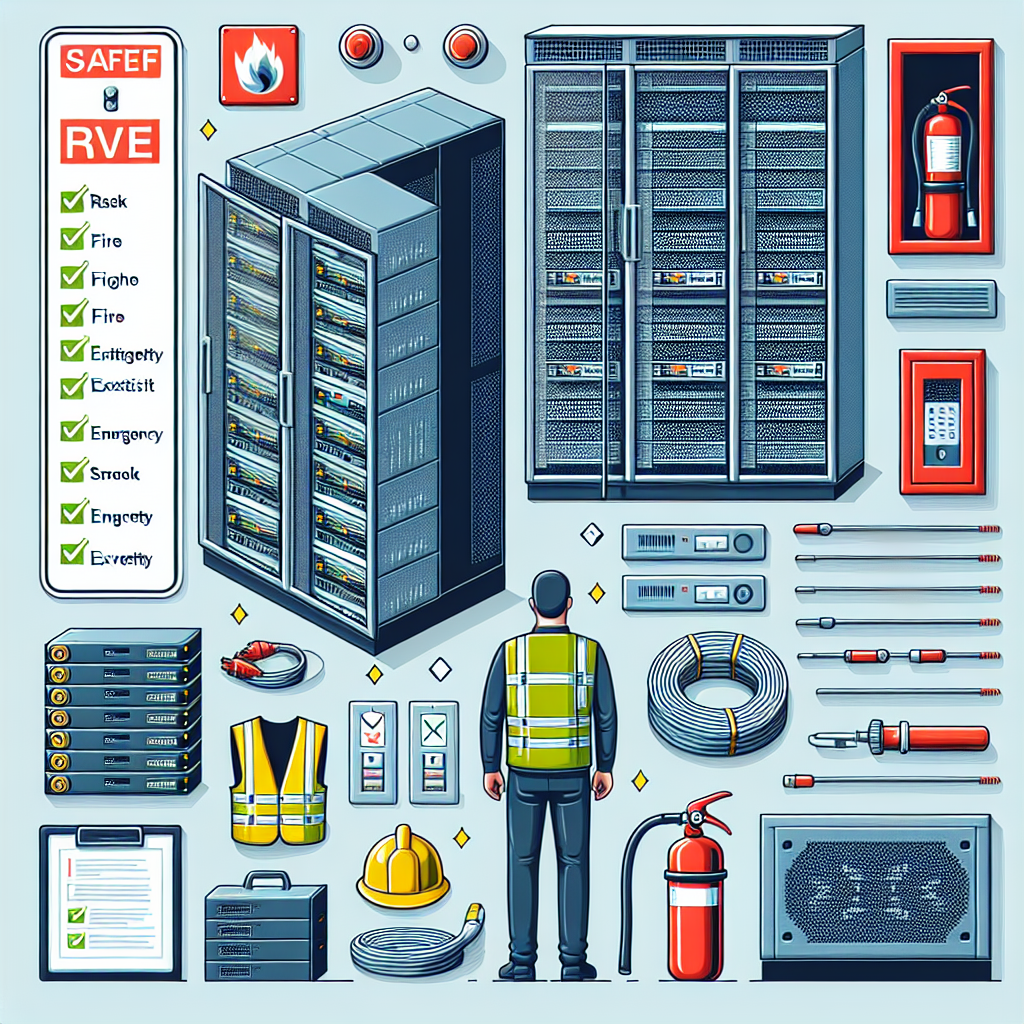Data centers are essential for storing and processing large amounts of data in today’s digital age. However, they also pose various safety risks that need to be addressed to ensure the smooth operation and protection of valuable information. To mitigate these risks, data center operators need to implement a comprehensive safety checklist that complies with industry regulations and standards.
One of the most critical aspects of data center safety is fire prevention and protection. Data centers house a significant amount of electrical equipment, which can be a fire hazard if not properly maintained. Regular inspections of electrical systems, wiring, and cooling systems are essential to identify potential fire risks. In addition, installing fire suppression systems, such as sprinklers and fire extinguishers, can help contain and extinguish fires quickly to prevent damage to equipment and data.
Another important safety consideration is ensuring proper ventilation and cooling systems are in place to prevent overheating of servers and other equipment. High temperatures can cause equipment failure and data loss, so it is crucial to monitor and maintain temperature levels within the data center. Regular inspections of HVAC systems and air filters can help identify and address any potential issues that could lead to overheating.
Data center operators should also implement strict access control measures to prevent unauthorized individuals from entering sensitive areas. This includes using keycard access systems, biometric authentication, and surveillance cameras to monitor and track access to the data center. By limiting access to only authorized personnel, data center operators can reduce the risk of theft, sabotage, or other security breaches.
Regular maintenance and cleaning of data center equipment are also essential for ensuring safety and preventing equipment failure. Dust and debris can accumulate on servers and other equipment, causing overheating and reducing performance. Regular cleaning and maintenance schedules should be established to keep equipment running smoothly and prevent downtime.
In addition to these measures, data center operators should also have a comprehensive disaster recovery plan in place to address potential risks such as natural disasters, power outages, and cyber attacks. This plan should include backup systems, off-site data storage, and regular testing to ensure that data can be quickly restored in the event of a disaster.
By implementing a comprehensive safety checklist that addresses these key areas, data center operators can ensure compliance with industry regulations and standards while minimizing risks to equipment and data. Regular inspections, maintenance, and monitoring are essential for identifying and addressing potential safety hazards before they escalate into serious issues. Prioritizing safety in the data center is essential for protecting valuable information and ensuring the smooth operation of critical systems.


Leave a Reply